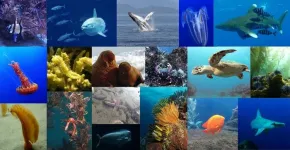(Press-News.org) Virginia Tech’s Audrey Ruple and Courtney Sexton, already deeply involved in data collection and analysis for dog health and connections to humans through the Dog Aging Project, are imploring fellow scientists to cast the net even wider for data on the shared environments of humans and dogs in a perspective piece that appears this month in the journal Science.
“Human environments and the impacts of environmental factors can vary substantially, and this variation should be captured by future studies of dogs to more accurately assess exposure risks for different and vulnerable populations,” Sexton and Ruple wrote. “Although there are accumulating data to support the validity of recognizing and integrating dogs as sentinels of human health, the current lack of a system for capturing the capacities in which dogs are representative of the exposomal influences on a spectrum of human experiences is problematic.
“The time to begin reporting such data is now.”
Ruple and Sexton, both of the Virginia-Maryland College of Veterinary Medicine, advocate standardized data collection on dog owners in studies of companion animal health, including “at minimum, owner-relevant demographics, such as age group, racial identity, gender identity, geographic location, residential environment type (urban, rural, suburban), household composition (i.e., living with unrelated people, living with family members, living alone), income, and education level.”
“It’s a call to action for researchers in the field to ensure we're including a diverse range of humans in our studies, not just a diverse population of dogs,” said Ruple, the Dorothy A. and Richard G. Metcalf Professor of Veterinary Medical Informatics. “This is crucial for making sure that the benefits and hazards we uncover that are related to our shared environment truly benefit everyone.”
“Exposome,” a term coined only 19 years ago by molecular epidemiologist Christopher Wild, appears as the sixth word in the article for Science and is a concept returned to repeatedly by Sexton and Ruple.
“The exposome can be considered the totality of environmental factors that may influence an individual's quality of life, including those pertaining to both the physical and social environments, such as air quality, access to resources, water, diet, financial standing, companionship, etc.,” said Sexton, a post-doctoral researcher in population health sciences at Virginia Tech. "Dogs and people have substantial overlap when it comes to their exposomes, but dogs live much shorter lives. So in looking at factors that impact both species and seeing outcomes at end of life in dogs, we may be provided with clues as to which of these factors are the most significant,” they wrote. “Human health is inextricably linked to the health of the environment, as is the health of other animals with whom people share habitats and resources. In particular, close relationships with canine companions offer an opportunity to learn how the shared exposome contributes to quality of life for both people and dogs.”
In the peer-reviewed article, Sexton and Ruple argued that the link between humans and dogs goes beyond shared physical environments and genetic similarities to include intertwined socioeconomic settings.
“Basically, we’re making a case that we need to pay more attention to the humans living alongside the dogs we study,” said Ruple.
“Paying attention to how ‘human-centric’ factors, like dog owners’ housing status, financial status, and education, affect dogs can open up new pathways of understanding multi-species approaches to diagnostics, care, and prevention of health issues that may not otherwise have an apparent cause in dogs,” Sexton said.
In the article, Ruple and Sexton drew links between how dogs are treated and issues of community welfare and social justice.
“Maltreatment of dogs correlates with access to care, resources, and social justice in human communities,” Sexton and Ruple wrote. “For example, city, county, and even individual property policies that restrict certain dogs on the basis of breed and size are frequently used discriminatorily to limit access to housing for specific people of different races, backgrounds, or socioeconomic class.
“On the other end of the spectrum, dogs often function as a form of social capital for humans, such as when they facilitate conversation between neighbors and make strangers appear more approachable or even more visible, as is the case with many unhoused individuals. Dog ownership can thereby improve quality of life by helping people build community, which also brings support for the animal.”
The Virginia-Maryland College of Veterinary Medicine, through its Animal Cancer Care and Research Center in Roanoke, its Center for One Health Research collaborating with the Edward Via College of Osteopathic Medicine in Blacksburg, and its public health program offering both bachelor’s and master’s degrees, emphasizes the concept of One Health, which is focused on the inevitable interlinkage of human, animal, and environmental health.
Sexton and Ruple reiterated the One Health concept in their work.
“Recent and emerging research reveals that companion animals are distinctly positioned to be sentinels of public health, social welfare, and the health of individuals,” they wrote in Science. “Human health is inextricably linked to the health of the environment, as is the health of other animals with whom people share habitats and resources. In particular, close relationships with canine companions offer an opportunity to learn how the shared exposome contributes to quality of life for both people and dogs.”
Sexton, who delivered a TEDx talk about 30,000 years worth of humans and dogs evolving together in shared settings, and Ruple, who serves on the executive leadership of the Dog Aging Project, stressed that dogs are unique among companion animals in their ability to serve as sentinels for human health issues.
“Although in some situations other species may be more appropriate indicators for a given risk factor,” they wrote, “dogs’ particular form of synanthropy, or adaptation to and integration into the human environment, is unmatched.”
END
Researchers issue ‘call to action’ for data on more diverse range of dog owners
2024-06-13
ELSE PRESS RELEASES FROM THIS DATE:
UTA awards more than $130,000 to spark new research
2024-06-13
The Office of the Vice President for Research and Innovation at The University of Texas at Arlington has granted 10 Research Enhancement Program (REP) awards valued at more than $130,000 to support new research initiatives.
The REP grant serves as seed funding for launching new research, providing a foundation for recipients to pursue future research and funding from external sources.
“UTA is committed to fostering a culture of innovation and research discoveries for our community of scholars,” said Kate C. Miller, vice ...
The Protein Society announces its Protein Science 2023 Best Paper recipients
2024-06-13
LOS ANGELES, CA
The Protein Society is proud to announce that the winners of the 2023 Protein Science Best Paper awards are Evan T. Liechty from the University of Colorado, USA, and Sophie Rizzo, from Lehigh University, USA.
Evan T. Liechty
Protein Science 2023 August;32(8):e4719.doi:10.1002/pro.4719
Analysis of neutral mutational drift in an allosteric enzyme
Evan T. Liechty1, Andrew Hren1, Levi Kramer1, Gregory Donovan1, Anika J. Friedman1, Michael R. Shirts1, Jerome M. Fox1
1Department of Chemical and ...
A conservation market could incentivize global ocean protection
2024-06-13
(Santa Barbara, Calif.) — The countries of the world agreed: Our planet needs more protection from human activity. And with the globe facing an assortment of environmental crises, they realized the plan needed to be ambitious. Thirty-by-thirty was their proposal: protect 30% of the planet by 2030. But while conservation is popular in principle, the costs of actually enacting it often stall even the most earnest efforts.
Three researchers at UC Santa Barbara have proposed a market-based approach to achieving the 30x30 targets in the ocean. They tested whether a system that allowed countries to trade conservation ...
New fabric makes urban heat islands more bearable
2024-06-13
This year has already seen massive heatwaves around the globe, with cities in Mexico, India, Pakistan and Oman hitting temperatures near or past 50 degrees Celsius (122 degrees Fahrenheit).
As global temperatures and urban populations rise, the world’s cities have become “urban heat islands,” with tight-packed conditions and thermal radiation emitting from pavement and skyscraper trapping and magnifying these temperatures. With 68 percent of all people predicted to live in cities by 2050, this is a growing, ...
Public more confident connecting increasing heat, wildfires with climate change than other extreme weather events, study finds
2024-06-13
Oregon State University researchers found that U.S. adults are fairly confident in linking wildfires and heat to climate change, but less confident when it comes to other extreme weather events like hurricanes, flooding or tornadoes.
The recent study found that politics and personal experience played significant roles in people’s responses: Self-identified Republicans were less likely than Democrats to attribute extreme weather events to climate change, though Republicans who had personally experienced negative impacts from extreme weather events were more likely to link them to climate change than those who hadn’t.
Looking at ...
Marine heatwaves devastate red gorgonians in the Medes Islands
2024-06-13
The increase in the frequency and intensity of marine heatwaves in recent decades is one of the effects of global climate change. A study by the University of Barcelona, published in the Journal of Animal Ecology, shows that the extreme heatwave of 2022 caused an “unprecedented” increase in mortality of the red gorgonian Paramuricea clavata, affecting 70% of the colonies located in the Montgrí Natural Park, the Medes Islands and the Baix Ter. According to the researchers, these results are “alarming ...
Only one in 20 therapies tested in animals reach approval for human use
2024-06-13
An analysis of reviews of translational biomedical research reveals that just 5% of therapies tested in animals reach regulatory approval for human use. The study, an umbrella review, published June 13th in the open access journal PLOS Biology, summarizes other systematic reviews and provides high level evidence that while the rate of translation to human studies is 50%, there is steep drop off before final approval. The authors argue that improved robustness and generalizability of experimental approaches could help increase the chances of translation and final approval.
Animal studies are used in basic research ...
Antimalarial compounds show promise to relieve polycystic ovary syndrome
2024-06-13
Plant-derived compounds best known for their antimalarial properties relieve polycystic ovary syndrome, a major public health problem that affects millions of women worldwide. These compounds, called artemisinins, achieve their affect by suppressing ovarian androgen production in multiple rodent models as well as in a small cohort of human patients, according to a new study. The findings not only underscore the versatility of artemisinins but reveal a promising new approach for preventing and treating the disorder. Polycystic ovary syndrome (PCOS) is one of the most common ...
Canine companions are indicators of human health, but more canine data is needed
2024-06-13
In a Perspective, Courtney Sexton and Audrey Ruple discuss how companion animals, especially dogs, are distinctly positioned to be sentinels of human health due to the environments they and humans closely share, but, say the authors, systems for improving data capture around dogs’ environments are critically needed. Humans share their environments closely with companion animals, leading to similar health risks such as respiratory illnesses, cancers, and cognitive dysfunction. Dogs, having cohabitated with humans for about 30,000 years, are particularly well-suited ...
Novel platform enables unprecedented imaging of the human brain
2024-06-13
A new platform enables simultaneous capture of protein expression, cellular morphology, neural projection, and synapse distribution in large-scale human brain tissues at multiple scales, researchers report. The system ensures the preservation of cellular architecture while enabling detailed imaging and analysis of large human brain tissue samples at unprecedented resolution and speed. The authors demonstrated its utility by processing whole human brain hemispheres to reveal pathological features of Alzheimer’s disease tissue. “We envision that this scalable technology platform will ...



